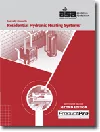4 reasons hydronic radiant heating promotes sustainability and indoor environmental quality
Radiant systems provide numerous benefits for homeowners.
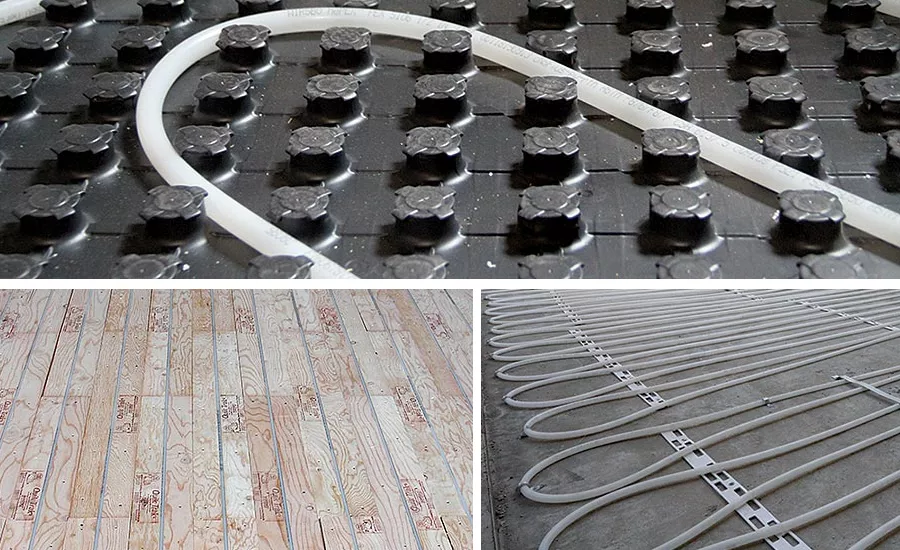
In addition to its extreme thermal comfort that keeps warmth close to the body, hydronic radiant heating is also exceptionally energyefficient and helps promote a cleaner indoor environment with better air quality.

The tie-down method to wire rebar or the staple-down method to foamboard insulation are typical installations for embedding the radiant tubing in concrete slabs.
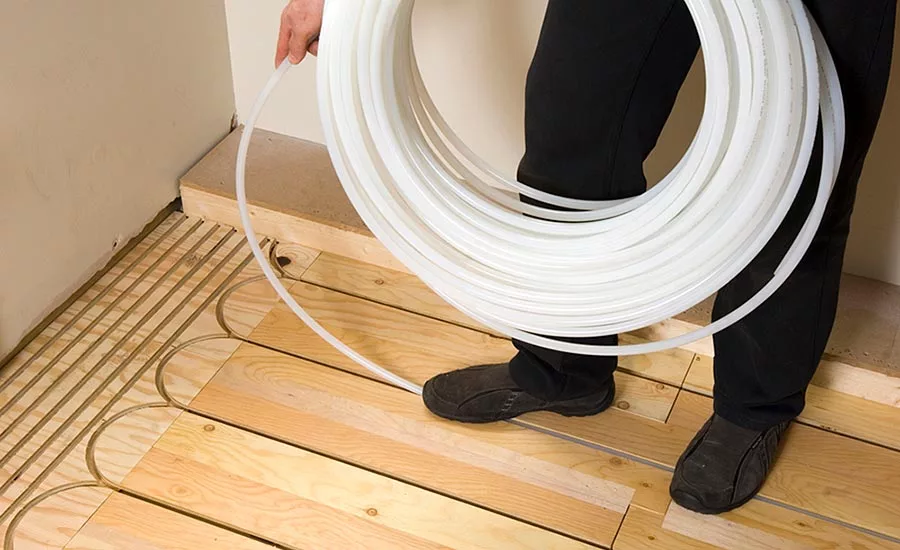





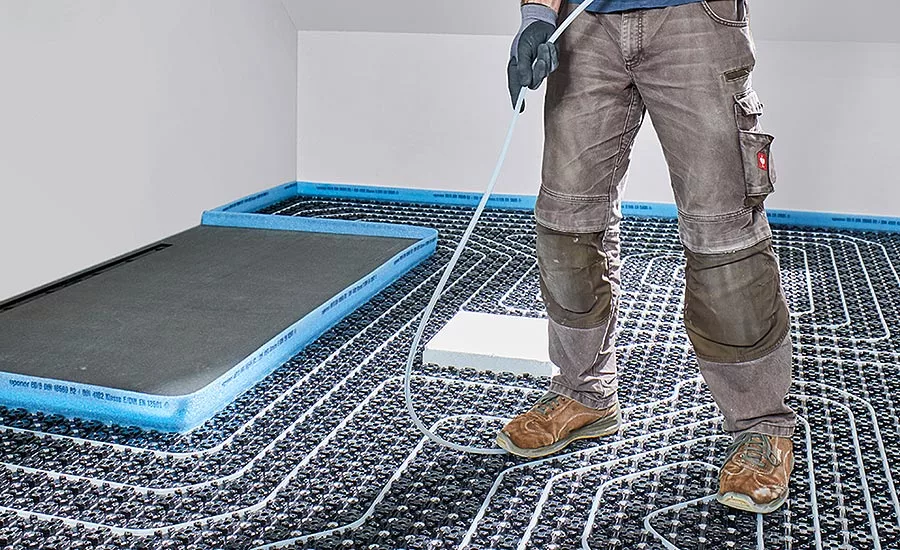
With remote work becoming the standard for many employees across the U.S. and homeowners spending even more time indoors as a result of the pandemic, a new focus is emerging on the need for sustainability and indoor environmental quality in homes. This trend is bringing energy-efficient solutions, such as radiant floor heating, along with renewable energy sources, such as geothermal and solar, to the forefront.
While hydronic radiant heating has been around for hundreds of years and has been the main form of heating homes throughout Europe for decades, the U.S. has lagged in adopting this technology, with only about 4% of homes using hydronic radiant heat. In addition to its extreme thermal comfort that keeps warmth close to the body, hydronic radiant heating is also exceptionally energy-efficient and helps promote a cleaner indoor environment with better air quality.
This article will delve into the four reasons why radiant is a viable option to heat a home. It will also offer various installation options to gain a better understanding of how to install a system.
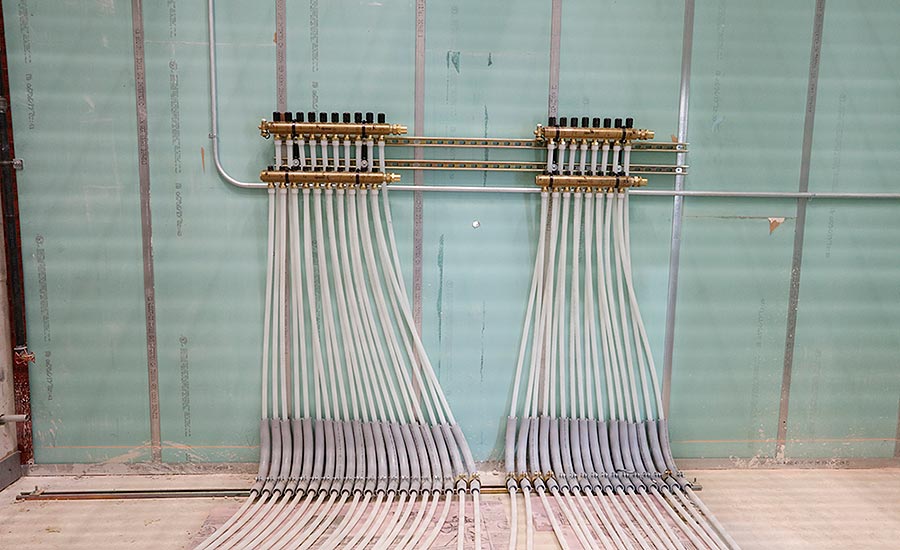
No 1: Better air quality
In a hydronic radiant heating system, warm water flows through flexible plastic tubing embedded in a concrete slab or placed on top or underneath the subfloor. The warmth from the flowing water through the tubing radiates up from the floor to bring comfort to people in a space.
Because hydronic radiant heating systems use pumps to move water, instead of fans or blowers to push air, the system does not circulate dust, allergens or odors throughout a home. In fact, people with severe allergies have found relief when they install hydronic radiant heating systems along with hard-surface flooring, instead of carpet, to minimize the allergens in their homes.
In addition to the air-quality benefits, hydronic radiant floor heating systems also do not require ductwork. This provides homeowners with greater freedom for furniture placement without having to avoid covering vents.
No 2: Quieter environment
It’s a fact: Forced-air furnaces and the ductwork associated with them are noisy. Most people with traditional HVAC systems are familiar with the loud sounds coming from their basements or attics when the heat kicks on in the winter. There is also the annoying sound of the ductwork expanding and contracting as the hot air blows through the system and then cold air enters when the system is off.
Hydronic radiant floor heating is quiet. The water running through the tubing in the floors silently distributes warmth throughout a space without any noise. The mechanical-room parts, such as a boiler, pumps, manifolds and actuators, also work quietly to bring heat to a home.
Best of all, radiant systems are practically maintenance-free. With the exception of occasional boiler maintenance, the rest of the system does not require any annual work. Traditional HVAC systems, on the other hand, need regular replacement of air filters and furnace tuneups that can add up over time.
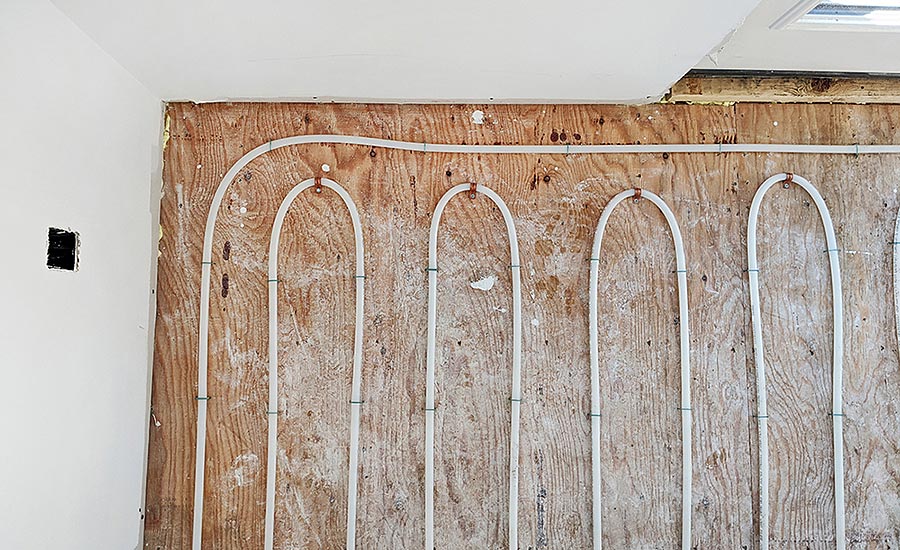
No 3: Energy savings and sustainability
Water has 3,500 times the capacity of air to transport energy. That means a hydronic radiant heating system that uses water to heat a space, rather than air, will be much more energy-efficient. This is especially important because heating and electricity generation accounts for nearly 25% of all greenhouse gas emissions, per the EPA.
Radiant is also more energy-efficient because the heat stays near the floor, which of course is where people live. In a traditional forced-air HVAC system, the hot air blows into a room and quickly rises to the ceiling. This, of course, is not ideal since people don’t live in their ceilings. Additionally, people are more comfortable with a radiant floor heating system at a lower thermostat setting, such as 68° F, than with a forced-air system, even at a higher thermostat setting such as 72°. Those four degrees can make a big difference in energy use over time.
Another benefit of radiant heating systems is the fact that they are installed in zones. This means occupants have a separate thermostat for each radiant-heated space. Not only does this provide custom comfort control when people are in a space, but it also makes the system even more energy-efficient because people can keep the heat low in spaces that are not in use.
Best of all, hydronic radiant floor heating systems can become even more energy-efficient when paired with sustainable heat sources, such as geothermal and solar. These systems can potentially provide a structure with free heat, which is the best form of sustainable comfort.
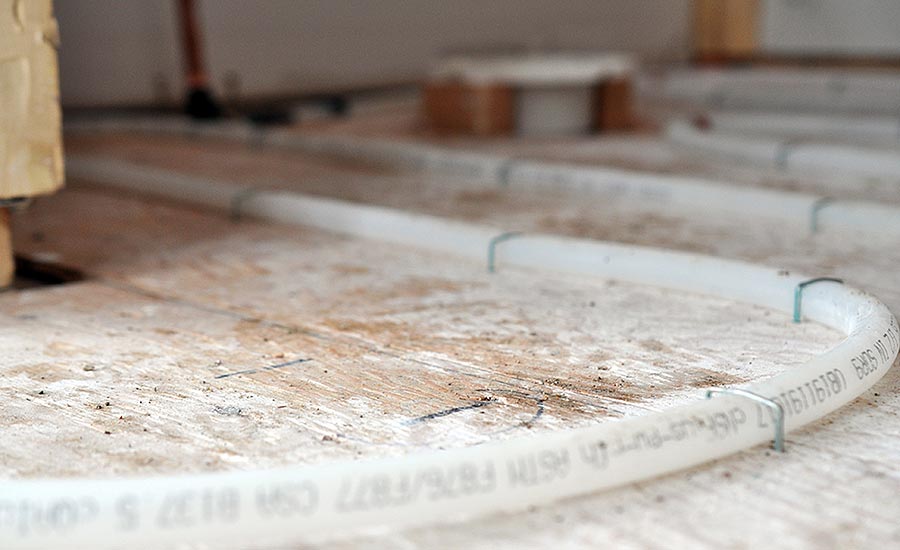
No 4: Superior comfort
Speaking of comfort, hydronic radiant floor heating systems are hands (and feet) down one of the most comfortable forms of heat available. The reason radiant heat is so comfortable is because it most closely aligns with the ideal heating curve for the human body.
And, as stated previously, when forced-air heat enters a room, it quickly heads to the ceiling, so people can’t keep an even heat near their bodies. Radiant heating, however, provides a consistent, even comfort that stays near the floor at all times.
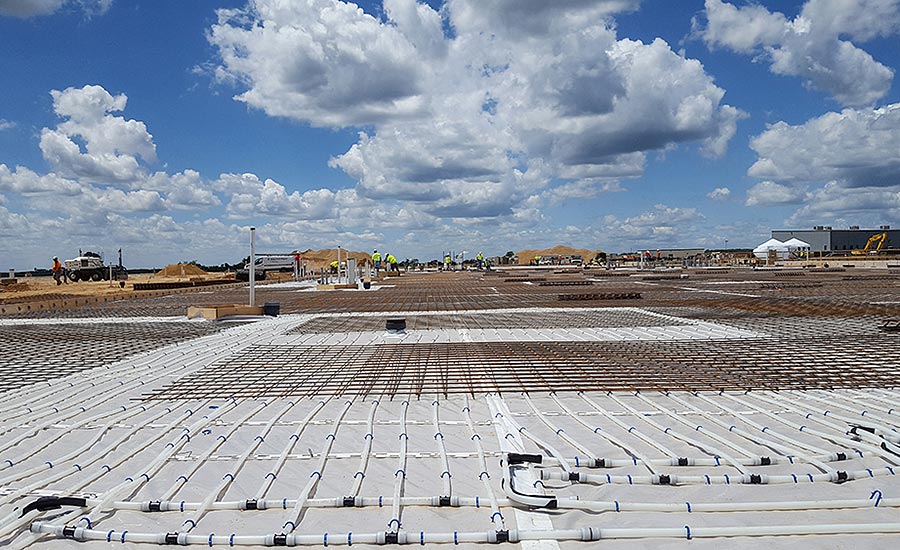
Radiant installation methods
There are many different methods for installing a radiant heating system. The tie-down method to wire rebar or the staple-down method to foam-board insulation are typical installations for embedding the tubing in concrete slabs.
For floors with joists below, there are aluminum heat-transfer plates that fasten to the underside of the floor. The radiant tubing simply snaps into the plates; and the aluminum is an excellent heat-transfer medium to warm the floors above.
For the tops of subfloors, there are several different methods, including stapling to the wood subfloor, or fastening wood panels with a groove down the center for the tubing and an aluminum sheet on the underside to help transfer heat.
There are also knobbed mats that adhere to concrete floors. These mats make it easy to simply “walk” the tubing into the mats for a quick, easy install that doesn’t require a lot of bending down.
Many radiant tubing manufacturers offer online or in-person training to learn more about the design and installation of these systems. It is very important to understand how to create a proper design of a radiant heating system before doing an installation.
For more information about radiant floor heating systems, research the various radiant tubing manufacturers across the U.S., or visit radiant
professionalsalliance.org, heatinghelp.com or healthyheating.com.
Looking for a reprint of this article?
From high-res PDFs to custom plaques, order your copy today!








